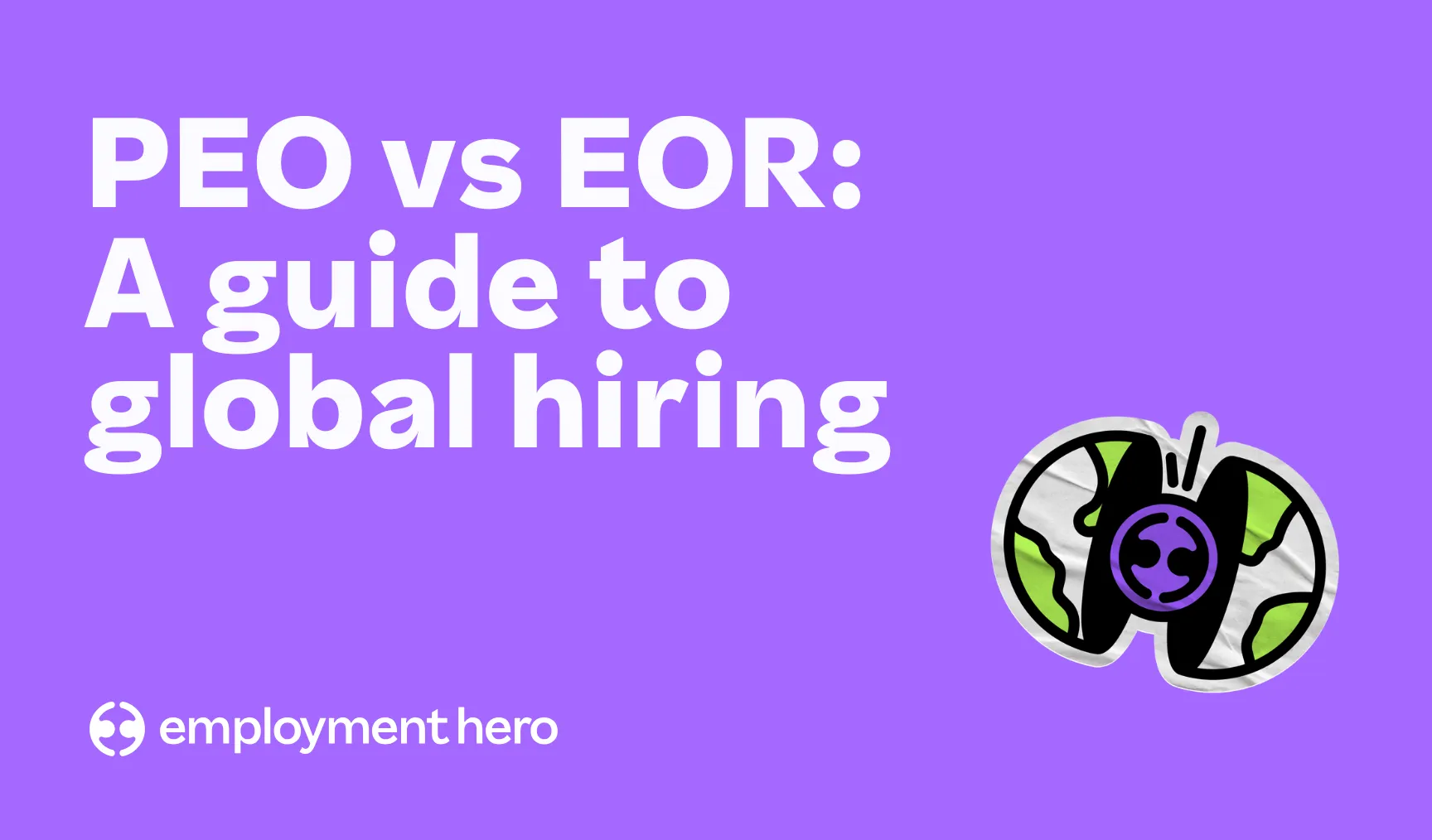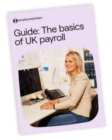UK Payslip Abbreviations and Tax Codes Explained
The one where you finally get to the bottom of those pesky abbreviations on that payslip

Payroll can be overwhelming, whether you’re an SME owner or an HR manager, but Employment Hero is here to simplify the process. Our Guide to Payroll in the UK is designed to break down the complexities, making payroll straightforward and easy to manage.Payslips, tax codes, and those confusing abbreviations are often the trickiest parts of payroll. This guide helps demystify these elements, ensuring you understand every detail. With Employment Hero, you’ll master payroll quickly, allowing you to focus on what truly matters—your people and business growth. Let’s dive in.
What should a payslip contain by law?
Under the Employment Rights Act 1996, employers must give all their employees and workers payslips. This is regardless of whether you pay them weekly, bi-weekly or monthly.A payslip will show the employee how much you’ve paid them. This includes what they’ve earned, and what was taken off. Employers can choose whether they provide printed or electronic (online) payslips. However, they must be shared with the employee on, or before payday.The official guidelines state that a payslip must show:
- The employees’ earnings before and after any deductions
- The amount of any deductions that may change each time they’re paid, such as tax and National Insurance
- The number of hours they worked, if their pay varies depending on time worked
Key terms to understand on a UK payslip
The main payslip components in the UK are made up of earnings and tax payments, deductions, employer contributions, bank payments and leave details. Most payments are usually made through bankers automated clearing services (BACS) so the employee’s bank name might also be shown. Personal information such as an employee’s full name and address can also usually be found. Let’s take a closer look at what each component means.
Payroll Number
Payroll numbers help employers identify the employees on their payroll. You may also call this an employee ID.
Employer Reference number
An employer reference number is known as a PAYE reference number. This is issued to every UK company that registers as an employer.
Income Tax (IT)
How much income tax the employee pays depends on the tax code they have. It might also appear as PAYE tax on a payslip.
Tax period
This is the period of time the employee has been taxed for.
Gross Pay (GP)
This is an employees’ earnings before deductions.
Taxable Pay (TP)
This is the gross pay less any deductions which attract tax relief. These deductions include pension contributions, salary sacrifice and more.
Net Pay (NP)
This amount is your employee gets after deductions. It’s what will actually be paid into their bank account.
Variable deductions
This reflects the amounts of any deductions that change from payday to payday, and what the deductions are for. It includes things such as national insurance and tax.
Fixed deductions
These are deductions that don’t change from payday to payday such as union dues. You must choose to give the details of these deductions on the payslip, or a separate statement. If you decides to do a separate statement, you need to provide these details at least once a year.
National Insurance Contributions (NIC)
The payslip usually shows the employee’s NI category and NI number. These are a type of tax that help you build an employee’s entitlement to certain benefits in the future such as state benefits and maternity allowance.
Jump into free Payroll
Jump into Employment OS
Other UK payslip abbreviations and their meanings
Pension deductions
If part of your employee’s salary is deducted to go into your workplace pension, this figure will reflect this. You might want to have a separate section to show employer contributions if you match their pension.
Leave details
This is a summary of your employee’s accrued leave, and how much leave they have taken, and how many paid leave days remain. If you offer a leisure day, or a wellness day you may also want to add that under this section in a separate line.
Year-to-date (YTD)
This column shows how much you’ve paid in the tax year up until now.
This pay
This column shows deductions made in this period.
Period starting and Period ending
This timeframe shows whether you are paid monthly, weekly or bi-weekly. You may also want to add a separate line to show the date paid.
Bank payments
This lists the employee’s bank name, and the amount paid into that account.
What are tax codes on payslips?
A tax code is used by the employer or a pension provider to work out how much Income Tax to take from an employee’s pay or pension.It’s usually made up of numbers and letters. The letter in the tax code refers to the employee’s situation and how it affects their Personal Allowance.HM Revenue and Customs (HMRC) will tell you which code to use. How much tax you pay depends on your rates and earnings threshold.
What is an emergency tax code?
Emergency tax codes are usually temporary. If an employee is on an emergency tax code, their payslip will show:
- 1257 W1
- 1257 M1
- 1257 X
HMRC will usually update the tax code when you or your employee provide them the correct details. If an employee’s change in circumstances means they have not paid the right amount of tax, they’ll stay on the emergency tax code until they’ve paid the correct tax for the year.
Do employers need to keep a record of employee payslips?
It is mandatory for employers to keep records of employee payslips.Your records must show you’ve reported accurately, and you need to keep them for 3 years from the end of the tax year they relate to. HMRC may check your records to make sure you’re paying the right amount of tax.As part of your PAYE and payroll obligations, you must keep records on:
- What you pay your employees and the deductions you make
- Reports you make to HMRC
- Payments you make to HMRC
- Employee leave and sickness absences
- Tax code notices
- Taxable expenses or benefits
- Payroll Giving Scheme documents, including the agency contract and employee authorisation forms
Find out more about the penalties that might incur if you don’t keep records properly here.While keeping detailed payroll records is crucial for compliance, managing HR and payroll separately can make this task more complex than it needs to be. For SME owners and HR managers alike, the advantages of an integrated, all-in-one solution like Employment Hero are clear. By bringing HR and payroll together, you streamline compliance, enhance accuracy, and ensure that all necessary data is easily accessible. This unified approach reduces administrative burdens, minimises errors, and helps your business meet its obligations with ease.
Go paperless with Employment Hero
With all those records to keep on top of, and payroll admin to contend in every pay period, why not go paperless with Employment Hero?Our all-in-one HR, hiring and payroll solution offers everything you need from finding and hiring top talent to onboarding new hires, automating complex payroll and driving employee engagement, all backed by UK-based support. This means your payroll team will be able to save time and get support with compliance in the UK. Spend less time on admin, and more time on your people. Book a demo with one of our team today to see how you can automate your payroll and HR processes.
Related Resources
-
 Read more: Setting employee expectations: Your guide to getting it right
Read more: Setting employee expectations: Your guide to getting it rightSetting employee expectations: Your guide to getting it right
Learn how to set clear employee expectations to boost productivity and engagement. Discover actionable tips and strategies for leadership success.
-
 Read more: PEO vs. EOR: A guide to global hiring
Read more: PEO vs. EOR: A guide to global hiringPEO vs. EOR: A guide to global hiring
Contents Expanding your business into new markets is a powerful growth strategy. But hiring talent globally introduces a maze of…
-
 Read more: How to build a global team without a local entity
Read more: How to build a global team without a local entityHow to build a global team without a local entity
Learn how to streamline your hiring and expand your UK business globally with an Employer of Record (EOR) without the…





















